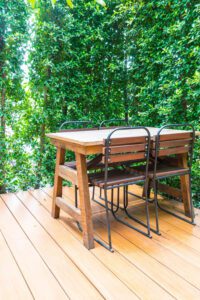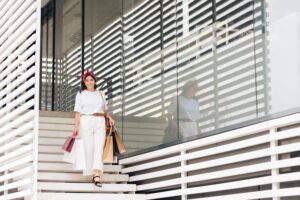When planning a new home or renovating an existing one, choosing the right roofing material is one of the most crucial decisions. A roof not only defines the visual appeal of a house but also determines its durability, energy efficiency, and comfort. Trapezoidal metal roofing has become increasingly popular across Europe and the United States for its blend of practicality and modern design. But what makes it such a smart choice for today’s homeowners? This article explores the main advantages, practical tips, and expert insights to help you make an informed decision.
Understanding trapezoidal metal roofing
Trapezoidal roofing is a metal sheet system characterized by its distinct trapezoid-shaped ridges. Made from high-quality steel or aluminum, it is designed to provide both aesthetic and functional benefits. It is commonly used on residential buildings, industrial facilities, and even on architectural facades. According to architect and construction lecturer Dr. Michael Hanley from the University of Birmingham, “trapezoidal roofing combines strength with lightness, offering a design that is both minimalistic and highly durable.”
The geometry of the trapezoidal profile ensures efficient water drainage and exceptional load-bearing capacity. Its streamlined form fits perfectly with both traditional and modern architecture. Moreover, manufacturers today provide multiple coatings and color options, allowing homeowners to align the roof’s design with their property’s overall aesthetic.
Versatility and adaptability
One of the most valued features of trapezoidal metal roofing is its exceptional versatility. It can be adapted for various building types — from family homes to warehouses, offices, or public facilities. The same material is also suitable for fences and facades, providing a unified, modern appearance. Structural engineer Laura Jensen from the European Construction Research Council explains that “its modular design makes trapezoidal roofing easy to adjust for custom shapes and dimensions, which reduces waste and saves time.”
Many suppliers offer customization options, meaning that homeowners can order sheets in specific sizes or with particular protective coatings. This ensures a perfect fit, fewer seams, and a longer service life. Such adaptability has made trapezoidal roofs one of the most flexible construction materials in the European market.
Easy and efficient installation
Installing a new roof can often be time-consuming and costly. Trapezoidal metal roofing, however, is known for its quick and straightforward installation process. The sheets are lightweight yet strong, allowing contractors to work efficiently and with less heavy machinery. In many cases, a professional installation team can complete a standard home roof within just a few days.
According to roofing expert Prof. Emily Carter from the American Institute of Building Science, “installation efficiency directly impacts overall project costs. Trapezoidal metal sheets save up to 30% in labor time compared to traditional roofing tiles.” This translates into lower expenses for homeowners and less disruption during construction or renovation.
Long-lasting durability and weather resistance
Another strong reason to choose trapezoidal metal roofing is its impressive durability. These roofs are engineered to withstand harsh environmental conditions, including strong winds, heavy snow, and temperature fluctuations. Because of their reinforced structure and protective coatings, they maintain their shape and appearance for decades.
Research conducted by the European Steel and Roofing Federation in 2024 showed that well-maintained trapezoidal roofs can last over 50 years. They are also highly resistant to corrosion and mechanical damage. The additional zinc or polyester coating enhances their longevity and minimizes the need for repairs. Long service life is one of the main reasons why both homeowners and architects consider it a sustainable and cost-effective solution.
Effective insulation and energy efficiency
Contrary to the old myth that metal roofs retain excessive heat or lose warmth quickly, modern trapezoidal systems provide excellent thermal and moisture insulation. When combined with proper underlayers, such as anti-condensation membranes, these roofs effectively block heat, cold, and humidity. This results in a consistent indoor climate throughout the year.
Energy studies from the University of Warsaw’s Department of Sustainable Construction found that trapezoidal roofs reduce heating and cooling costs by up to 20% annually. As energy efficiency becomes a key priority in home design, this roofing solution aligns perfectly with modern ecological standards. “Metal roofing today is as much about energy management as protection,” notes sustainability expert Prof. Claire Dubois from the Paris School of Architecture.
Cost-effectiveness and long-term value
In terms of financial efficiency, trapezoidal roofing offers excellent value for money. It combines a competitive purchase price with long lifespan and minimal maintenance costs. Since installation is relatively simple, total project expenses are lower than those of traditional tile or slate roofs. Maintenance primarily involves occasional cleaning and inspection, making it one of the lowest-cost long-term roofing solutions on the market.
Furthermore, the sleek design of trapezoidal panels adds to the resale value of a home. Home buyers often view metal roofing as a sign of modern construction and reliability. Real estate data from the U.S. National Roofing Association indicates that houses with high-quality metal roofs can increase in value by up to 6% compared to those with conventional materials.
Avoidable mistakes when choosing a roof
Even the best roofing materials can fail if certain mistakes are made during planning or installation. To ensure the longevity and performance of a trapezoidal roof, experts recommend avoiding the following:
- Skipping professional installation – Even if trapezoidal sheets are simple to work with, only certified installers can guarantee watertight and properly aligned roofs.
- Neglecting insulation layers – Anti-condensation and thermal layers are crucial for comfort and energy savings.
- Choosing low-quality materials – Cheaper steel options often rust quickly or deform under pressure.
- Ignoring regional climate conditions – Roof profile and thickness must match local weather patterns, especially in snowy or windy regions.
- Overlooking regular maintenance – Periodic inspections and cleaning help prevent damage and extend roof life.
Practical tips for maintaining trapezoidal roofs
Roof maintenance plays a vital role in ensuring durability and performance. While trapezoidal roofs require less care than other types, certain preventive actions can make a significant difference. Here are the key recommendations experts advise following:
- Clean the roof surface twice a year to remove dirt, leaves, and debris.
- Check fastening points and joints for tightness after storms or seasonal changes.
- Apply corrosion-resistant coatings every 5–7 years, especially in coastal areas.
- Trim trees and remove branches that may scratch or damage the surface.
- Schedule professional inspections every few years to assess general condition.
As construction specialist Dr. Robert Evans from the Massachusetts Institute of Technology emphasizes, “proactive maintenance ensures structural stability and significantly extends the lifespan of metal roofing systems.” Regular attention prevents small issues from turning into costly repairs.
Expert insights and modern innovations
Experts agree that trapezoidal metal roofing continues to evolve with technological advancements. Modern innovations include photovoltaic integration, acoustic insulation layers, and smart coatings that reflect solar radiation. According to recent market analysis by the European Green Construction Observatory, the demand for eco-efficient metal roofing grew by 18% in 2024.
Architectural technologist Anna Müller notes, “trapezoidal systems represent the future of sustainable roofing. They merge modern aesthetics with functionality, helping buildings achieve better energy ratings and reduce their carbon footprint.” This perspective underlines why many European cities now promote metal roofing in sustainable housing programs.
Summary
Trapezoidal metal roofing is more than just a trend — it’s a durable, versatile, and energy-efficient solution that fits the needs of modern construction. Combining aesthetic appeal with long-term practicality, it ensures protection against weather, stability under pressure, and a distinctive architectural look. Easy installation, affordability, and minimal maintenance make it a reliable investment for decades to come.
By choosing high-quality materials, hiring skilled professionals, and following maintenance recommendations, homeowners can enjoy a strong, efficient, and visually striking roof. As Professor Hanley concludes, “a well-designed trapezoidal roof is not merely a cover — it’s a structural statement of resilience and innovation.”
In essence, investing in trapezoidal metal roofing means choosing lasting protection, modern design, and smart sustainability — values that define the future of construction and ensure comfort for generations ahead.







